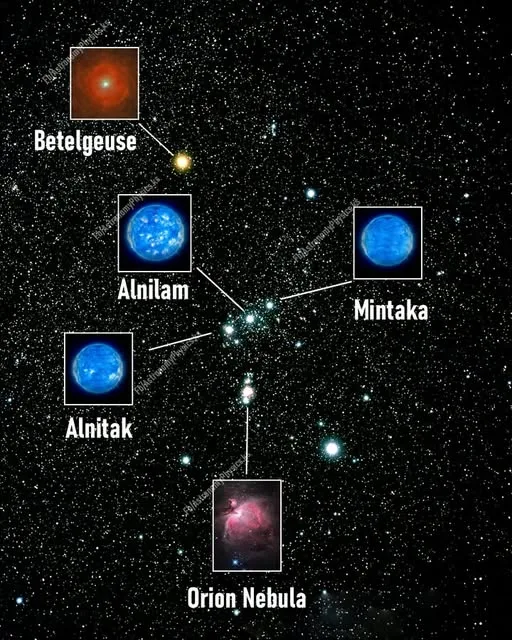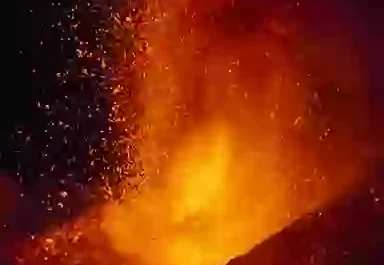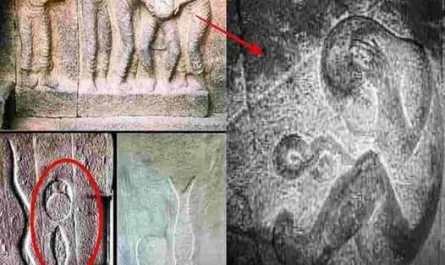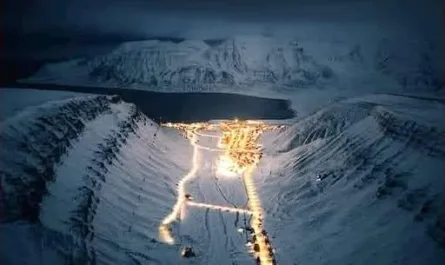Look up on a clear night, and chances are you’ll spot the unmistakable figure of Orion the Hunter dominating the celestial sphere. Its prominent Belt of three aligned stars makes it one of the easiest constellations to identify. But beyond its beauty lies a profound cosmic lesson: when you gaze at Orion, you’re not just seeing a collection of distant lights – you’re witnessing the grand, ongoing drama of stellar evolution, a story etched across millions of years.

Orion, in a single frame of the night sky, encapsulates the past, present, and future of stars, offering us a breathtaking glimpse into the cyclical nature of the cosmos. Let’s embark on a celestial journey through this iconic constellation and unravel its stellar secrets.
Betelgeuse: A Dying Giant Whispering of the Past
Our story begins with the fiery red beacon marking Orion’s left shoulder: Betelgeuse. This colossal star is a red supergiant, a stellar behemoth nearing the end of its life. Imagine a star so vast that if placed at the center of our solar system, its outer layers would extend beyond the orbit of Mars – that’s the scale of Betelgeuse.
Its reddish hue is a telltale sign of its advanced age. Betelgeuse has already exhausted the hydrogen fuel in its core, and is now fusing heavier elements like helium. This process causes the star to swell to immense proportions and cool its outer layers, giving it that characteristic red glow.
But Betelgeuse’s current state is merely a prelude to a spectacular finale. Within the next 100,000 years – a blink of an eye on cosmic timescales – this giant is destined to explode in a supernova. This cataclysmic event will be a sight unlike any other seen from Earth. For a brief period, Betelgeuse will shine brighter than the full Moon, casting its brilliant light across the night sky and potentially even being visible during the day. This dramatic explosion will mark the end of Betelgeuse’s life, its matter recycled back into the interstellar medium, enriching it for future generations of stars. Gazing at Betelgeuse is like witnessing the twilight years of a cosmic elder, a powerful reminder of the inevitable stellar demise.
Orion’s Belt: Brilliant Stars Shining in Their Prime
Moving our gaze downwards, we encounter the iconic Orion’s Belt: three dazzlingly bright stars aligned in a remarkably straight line. These stellar siblings – Alnitak, Alnilam, and Mintaka – represent stars in the vigorous “present” of their lives.
These are not the bloated giants like Betelgeuse, but still massive, hot, blue-white stars burning through their hydrogen fuel at an incredibly rapid rate. Their intense luminosity is a testament to the powerful nuclear fusion occurring within their cores. Alnitak, the easternmost star, is actually a multiple star system. Alnilam, the central star, is a supergiant even hotter and more luminous than Alnitak or Mintaka. Mintaka, the westernmost star, is also a multiple star system and appears slightly fainter than the other two.
While not as close to their fiery end as Betelgeuse, the stars of Orion’s Belt, due to their high mass, have shorter lifespans than smaller stars like our Sun. They too will eventually exhaust their fuel and undergo their own stellar deaths, likely collapsing into dense stellar remnants. For now, they shine brightly, powerful beacons representing the energetic middle age of massive stars.
The Orion Nebula (M42): A Cosmic Cradle of the Future
But the true magic of Orion lies just south of its Belt, in what appears to the naked eye as a fuzzy patch. Through binoculars or a telescope, this transforms into the breathtaking Orion Nebula (also known as Messier 42 or M42). Unlike the aging and mature stars we’ve discussed, the Orion Nebula is a vibrant stellar nursery, a sprawling cloud of gas and dust where new stars are being born.
This glowing nebula is a region of intense star formation. Gravity pulls together dense clumps of gas and dust within the cloud. As these clumps collapse, their cores heat up until nuclear fusion ignites, and a new star is born. The intense radiation from these newborn stars illuminates the surrounding gas and dust, creating the stunning visual spectacle we observe.
Within the Orion Nebula, astronomers have identified countless protostars – stars in their earliest stages of formation – and young stellar objects. In just a few million years, these newborn suns will emerge from their dusty cocoons and take their place in the galaxy, continuing the endless cycle of star birth and death. The Orion Nebula is a window into the cosmic future, a place where the raw materials of the universe are being forged into the shining stars of tomorrow.
A Cosmic Drama Unfolding in Our Night Sky
From the impending supernova of Betelgeuse to the brilliant reign of Orion’s Belt stars and the ongoing birthing process within the Orion Nebula, this single constellation encapsulates the entire stellar life cycle. When you gaze at Orion, you’re not just seeing a static pattern of stars; you’re witnessing a dynamic cosmic drama unfolding across unimaginable timescales.
Orion serves as a powerful reminder that the universe is in a constant state of flux, of creation and destruction. It’s a testament to the incredible processes that shape our cosmos and our own existence, as we too are made of the stardust forged in the hearts of long-dead stars. So the next time you spot the familiar figure of the Hunter in the night sky, take a moment to appreciate the profound story it tells – a story of the past, present, and future, written in the radiant language of the universe.





